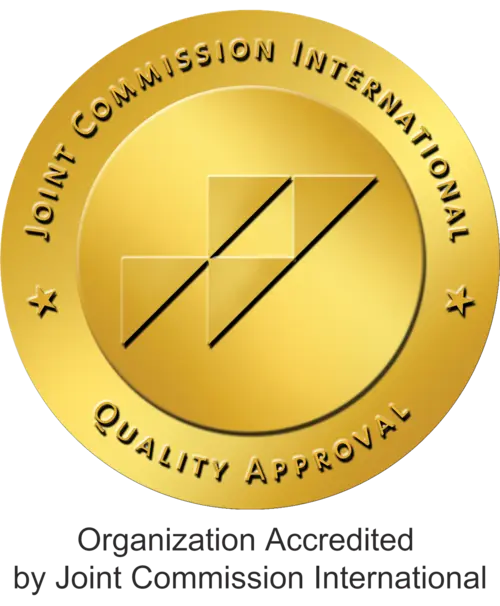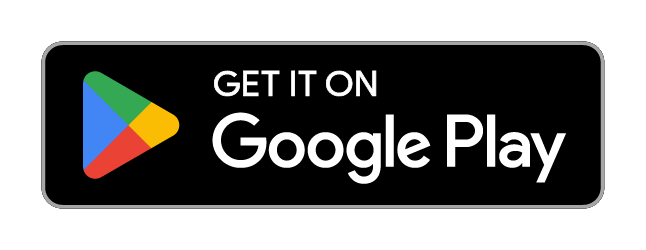Tests and Scales Applied to Children and Adolescents
Tests and Scales Applied to Children and Adolescents
PROJECTIVE TESTS
The projective tests applied to collect clues about the child's inner world provide information about the child's references to the family and the outside world and assist in the analysis of the unconscious processes.
CAT (Perception Test for Children): It is applied to children between the ages of 3-10. There are 10 picture cards children are asked to tell stories about these picture cards.
TAT (Thematic Perception Test): It can be applied to children and adults from the age of 10. People are asked to tell stories about these picture cards.
Rorschach Test: It consists of 10 cards with ink spots. The personality traits and emotional processes of the individuals are analyzed from the answers given.
Louisa Düss Psychoanalytic Stories Test: The child is asked to complete unfinished stories.
Beier Sentence Completion Test: It gives information about the child's attitudes, beliefs and motivations. There are two separate forms that are applied to adults from the age of 8-16 and from the age of 16.
RATING SCALES
In terms of enriching the sources from which information is obtained in the evaluation of psychopathology, planning of intervention and evaluation of the effectiveness of treatment in children and adolescents rating scales are used very often. Some of the most commonly used are:
Child Behavior Assessment Scale (CLEA): It is an assessment scale that identifies and shows the severity of the outgoing behavioral problems in children and adolescents. It is filled by parents. It is used to evaluate children and adolescents between the ages of 4-18.
Conners Rating Scales (CDO): It is a scale that supports the diagnosis of Attention Deficit and Hyperactivity Disorder and evaluates accompanying behavior, anxiety and somatic problems. There are different forms that are filled out by parents and teachers. Used to evaluate children over 6 years old.
Depression Scale for Children (: It is a scale that investigates and shows the symptoms of depression in children and adolescents. The child fills himself, the score above 19 indicates that the child is depressed clinically.
Social Anxiety Inventory for Children: It is a scale used to screen the symptoms of children with social anxiety, who are afraid to speak in front of the community or to meet new people and to show the severity of the anxiety.
Family Assessment Scale (FAS): It is a scale that scans the problem solving and communication skills, distribution of roles in the family, and emotional response levels of the family the child is in. It is filled by parents and children.
Family Life and Child Rearing Attitude Scale (PARI): It is a scale that investigates the attitudes of the family in the fields such as showing love, care, setting limits, democratic behavior, and providing discipline while raising children. It is filled by parents or caregivers.
Modified Early Childhood Autism Screening Scale (M-CHAT): It is a scale that scans symptoms of autism in children. The child's social interests include speaking and communicative skills, and recurrent, limited interests. It is filled by parents or caregivers.
Autism Behavior Checklist (ABC): It is a scale that scans behavioral problems observed in autistic children. It is filled by parents.
TDM (FOLLOWING PHARMACEUTICAL BLOOD LEVELS): Blood should be collected from the person periodically in order to determine the levels of the drugs used in the blood. The level of the drug in the blood allows determination of the drug used at the effective dose, below the effective dose, or at the toxic dose and dose adjustment.
QEEG
It is a technique that analyzes the brain's electrical activity record taken from the scalp and shows the distribution of waves of different frequencies on the brain and thus provides indirect information about the operation of the brain. When QEEG is repeated after treatment, it can show the positive change provided by treatment.
Cas (Cognitive Assessment System)
The CAS test is a battery of intelligence and aptitude that assesses the adequacy of 5-17 age group children in cognitive processes. It consists of 4 scales and 12 subtests. In the test individual; planning, attention, concurrency, and successive cognitive processes are evaluated. CAS 5-7 and 8-17 years old It is organized as two separate forms. The application takes between one and two hours.
CAS application areas
• Evaluation of children with attention deficit and hyperactivity disorder,
• Assessment of those with learning disabilities
• Prediction of success,
• Assessment of the mentally disabled,
• Evaluation of those with traumatic brain injury,
• Evaluation of gifted children,
• Identifying those with planning problems,
MOXO CONTINUOUS PERFORMANCE TEST:
The MOXO Continuous Performance Test, developed for children (6-12 years) and adults, is an "online" attention measurement test conducted in a computer environment that helps diagnose ADHD (Attention Deficit and Hyperactivity Disorder). MOXO test; measures attention, timing, hyperactivity, impulsivity. The child form of the MOXO Continuous Performance Test takes 15 minutes and the adult form takes 18.5 minutes.
WHO CAN BENEFIT FROM MOXO CONTINUOUS PERFORMANCE TEST?
For kids:
- Despite his willingness and effort, he has not been successful in lessons, has always been active since childhood, suffering frequent injuries and losses,
- Those who have timing problems in exams and in their daily life (who are late when going out from home, who cannot complete the questions during the exam period),
- Those who leave their homework to the last moment, cannot work programmatically, put things in order,
- Responding to events and people suddenly and more than necessary,
- Individuals who have difficulty maintaining their attention despite being considered calm-hypoactive by the teacher or mother/father
For adults:
• who change Home, work, lover-spouse often than usual,
• who is Forgetful, having difficulty maintaining attention in meetings or classes,
• Frequent traffic accidents,
• Failing to show the expected performance in business life,
• Individuals working in jobs that require intense attention
It is very useful to apply MOXO Continuous Performance Test.
T.O.V.A: (Test Of Variables of Attention Continuous Performance Test)
It is a computerized, continuous performance test that measures attention and impulsivity. It is not affected by language. It has two sections of 10.3 minutes, totaling 21.6 minutes. There is a normative database for 4-80 years old. It can be applied to patients of all ages with attention deficit and impulse control disorders.
ATTENTION DEFICIENCY and LEARNING BATTERY
Attention Deficit Hyperactivity Disorder (ADHD) is a disease that can lead to extremely important academic, social and psychiatric problems, and its negative effects can last a lifetime. medication use plays an important role in the treatment of the disease.
ATTENTION DEFICIENCY HYPERACTIVITY DISORDER
(ADHD) TREATMENT TOOLS:
Attention Training
PLAY ATTENTION
Edufeedback (Play Attention: Attention Game) is used in children. In children; It is a feedback therapy for the child to learn impulse control and to extend the attention span in psychiatric disorders such as hyperactivity, attention deficit, learning difficulties, impulse control disorders, depression, mood disorders, behavioral disorder.
REHACOM
It is a technique used in therapy for the treatment of cognitive disorders without medication. It consists of different sections. These sections are used in the treatment of the following diseases;
Attention and Concentration Disturbances: This module consists of 24 parts. It is applied by determining the level for children and adults. An increase in visual attention and visual acuity of the individual who completes the module is observed.
Memory Disturbances: This module consists of 30 sections. It is used by level determination in individuals with learning and speaking difficulties and stuttering problems.
It provides flexibility and fluency in memory and speech. Logical Reasoning and Planning Disturbances: Consists of 24 parts. It teaches many probable thoughts that are increasingly difficult and provides an increase in logic intelligence.
Response Capabilities: This module consists of 15 parts. It supports the treatment of impulse control disorder.
The program also has modules related to hearing perception and space perception.
Rehacom does not only aim to reduce the performance loss that occurs in the cognitive performance level of patients who have had a serious head injury, but also makes progress within every individual who aims to increase their mental performance. During the study, individuals develop a new learning strategy and increase the capacity to use their brains. As with all rehabilitation studies, the aim of Rehacom is to bring the person to the pre-trauma state as much as possible or to the level that will be able to continue his daily life alone.
REHABIL
The purpose of “Rehabil”, which is among the Cognitive Repair Therapies Studies; to repair the targeted area and to make it reusable within its own systematic. It provides an improvement in the targeted areas by repeated application of some computer or paper and pencil exercises. It is used in psychiatric disorders leading to schizophrenia, autism, developmental disorders, and other cognitive problems.
TDCS APPLICATION WITH REHABIL OR REHACOM TESTS
Cognitive disorders in children and adolescents have been associated with a decrease in the activity of brain cells called neurons in the anterior region of the brain. In this context, there are brain stimulation treatments that can be used simultaneously to increase the firing of cells in the anterior part of the brain while performing cognitive rehabilitation exercises. This stimulation that stimulates brain cells also increased the efficiency obtained from the cognitive rehabilitation method.
Direct current therapy (tDCS) works with the principle of direct current stimulation, which does not harm human health, with a low density of the brain via two electrodes from the forehead. In recent scientific studies, it has been proved that the use of direct current therapies during cognitive rehabilitation exercises in children and adolescents facilitates cognitive development and increases the success rate in memory, attention, and executive functions. In the light of this scientific information, simultaneous use of tDCS treatment with computerized cognitive rehabilitation exercises in all children and adolescents over 6 years of age is becoming increasingly widespread all over the world and is among the treatments of the future. Direct current therapy (tDCS) taken simultaneously with computerized cognitive rehabilitation provides a positive increase in the cognitive capacity of children and adolescents.




